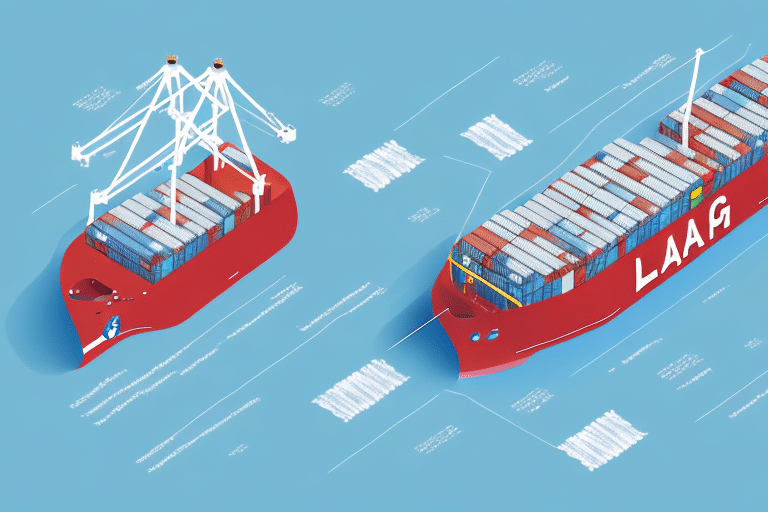What Is the Bill of Lading? A Comprehensive Guide
If you’re involved in the shipping or logistics business or if you import or export goods, then you must have come across the term bill of lading. A bill of lading is a crucial document used in international trade, serving multiple functions that facilitate the smooth movement of goods across borders. In this comprehensive guide, we’ll explore the fundamentals of the bill of lading, its evolution, operational mechanisms, significance in global commerce, and future trends shaping its use.
Understanding the Bill of Lading
Basics of a Bill of Lading
A bill of lading is a document issued by a carrier, typically a shipping company or freight forwarder, that acknowledges receipt of goods for shipment. It serves as a receipt for the shipper and a contract between the carrier and the shipper detailing the terms and conditions of the transportation. According to the CargoWise platform, the bill of lading is essential for ensuring that goods are transported according to agreed terms.
Types of Bill of Lading
- Straight Bill of Lading: Non-negotiable and specifies that the goods are to be delivered to a named consignee.
- Negotiable Bill of Lading: Can be transferred to third parties, allowing the holder to claim ownership of the goods.
- Ocean Bill of Lading: Used for shipments by sea.
- Inland Bill of Lading: Applicable to transportation over land.
- Through Bill of Lading: Covers multiple modes of transport, such as sea and land.
Difference Between Straight and Negotiable Bills of Lading
The primary difference lies in transferability. A straight bill of lading is non-transferable and designates a specific consignee for delivery. In contrast, a negotiable bill of lading can be endorsed and transferred, facilitating the sale or financing of goods while in transit. This flexibility is particularly beneficial in international trade where multiple transactions may occur before final delivery.
The Evolution of Bill of Lading
Historical Perspective
The concept of the bill of lading dates back to the sixteenth century, originally serving as a simple receipt for goods. Over time, it evolved into a more formalized document reflecting the complexities of global trade. By the nineteenth century, standardization efforts made bills of lading widely adopted, significantly aiding in the expansion of international commerce.
Transition to Electronic Bills of Lading (eBOL)
With advancements in digital technology, electronic bills of lading (eBOL) have emerged as a modern alternative to paper-based documents. eBOLs offer enhanced efficiency, security, and cost-effectiveness by enabling the creation, signing, and transmission of bills electronically. Platforms like Trade.gov highlight the benefits of eBOLs in reducing paperwork and streamlining processes.
Impact of Blockchain Technology
Blockchain technology is poised to revolutionize the bill of lading by introducing greater transparency and security. Immutable records and decentralized verification can minimize fraud and errors, ensuring the integrity of shipping documents. According to a IBM report, blockchain integration can significantly enhance trust and efficiency in global shipping operations.
Significance of Bill of Lading in International Trade
Legal and Contractual Importance
The bill of lading serves as a legally binding contract between the shipper and the carrier. It outlines the responsibilities, liabilities, and terms of the shipment, ensuring that both parties adhere to agreed-upon conditions. This legal framework helps prevent disputes and provides a basis for resolving any issues that may arise during transit.
Role in Cargo Insurance
In cargo insurance, the bill of lading is critical as it establishes the carrier’s liability for loss, damage, or theft of goods. It provides necessary documentation for processing insurance claims and determining the extent of coverage. Accurate and detailed bills of lading are essential for insurers to assess risks and validate claims effectively.
Facilitating Payment and Financing
The bill of lading is instrumental in financial transactions, particularly in letters of credit and trade financing. It serves as a document of title, enabling buyers and financiers to verify the ownership and value of goods, thereby facilitating smoother financial exchanges and reducing the risk in trade transactions.
Creating a Bill of Lading: Best Practices
Step-by-Step Process
- Gather Shipment Information: Collect details such as the carrier’s name, shipping date, and specifics of the goods including weight and quantity.
- Include Shipper and Consignee Details: Accurately list the names and addresses of the shipper and the consignee.
- Describe the Goods: Provide a detailed description of the goods, including their nature, quantity, packaging, and any special handling instructions.
- Outline Terms of Shipment: Specify the terms and conditions agreed upon between the shipper and the carrier.
- Obtain Carrier’s Signature: Ensure the carrier signs and dates the bill of lading to authenticate the document.
- Review for Accuracy: Double-check all information to prevent errors that could lead to disputes or delays.
Common Mistakes to Avoid
- Mistaking shipment details, such as incorrect quantities or weights.
- Providing vague or incomplete descriptions of goods.
- Incorrectly listing shipper or consignee information.
- Using outdated or non-standardized templates.
- Failing to update the bill of lading to reflect any changes in shipment terms.
Avoiding these mistakes ensures the bill of lading serves its intended purpose effectively, reducing the risk of legal complications and logistical issues.
Legal Implications of the Bill of Lading
Contractual Obligations
The bill of lading acts as a legally binding contract, outlining the duties and liabilities of both the carrier and the shipper. It specifies the terms under which goods are transported, including payment terms, delivery schedules, and conditions for handling discrepancies.
Evidence in Legal Disputes
In the event of a dispute, the bill of lading serves as crucial evidence in court or arbitration proceedings. It provides a documented trail of the shipment, helping to resolve conflicts related to delivery, damages, or non-compliance with contractual terms.
Compliance with International Regulations
Adhering to international shipping regulations is essential when drafting a bill of lading. Organizations like the International Maritime Organization (IMO) provide guidelines to ensure that bills of lading meet global standards, thereby facilitating smooth international trade operations.
Future Trends in the Use of Bills of Lading
Adoption of Digital Technologies
The shift towards digitalization continues to transform the bill of lading landscape. Electronic bills of lading (eBOLs) offer faster processing times, enhanced security, and reduced reliance on physical documents. The U.S. Department of Commerce highlights the increasing adoption of eBOLs as a response to the demand for more efficient shipping processes.
Integration with Blockchain and Smart Contracts
Blockchain technology and smart contracts are set to further revolutionize bill of lading usage. These technologies can automate contract execution, ensure data integrity, and provide transparent tracking of shipments. Companies like IBM are already exploring blockchain solutions to enhance the security and efficiency of shipping documentation.
Sustainability and Environmental Considerations
As sustainability becomes a key focus in global trade, the bill of lading will evolve to incorporate environmental considerations. This includes documenting the carbon footprint of shipments and ensuring compliance with environmental regulations, thereby promoting greener shipping practices.
Conclusion
The bill of lading remains a cornerstone of international trade, serving multiple functions from acting as a receipt to facilitating financial transactions and ensuring legal compliance. Understanding its intricacies, types, and the evolving landscape is essential for businesses engaged in global commerce. As digital technologies continue to advance, the bill of lading will become even more integral in enhancing the efficiency, security, and sustainability of international shipping operations.






















